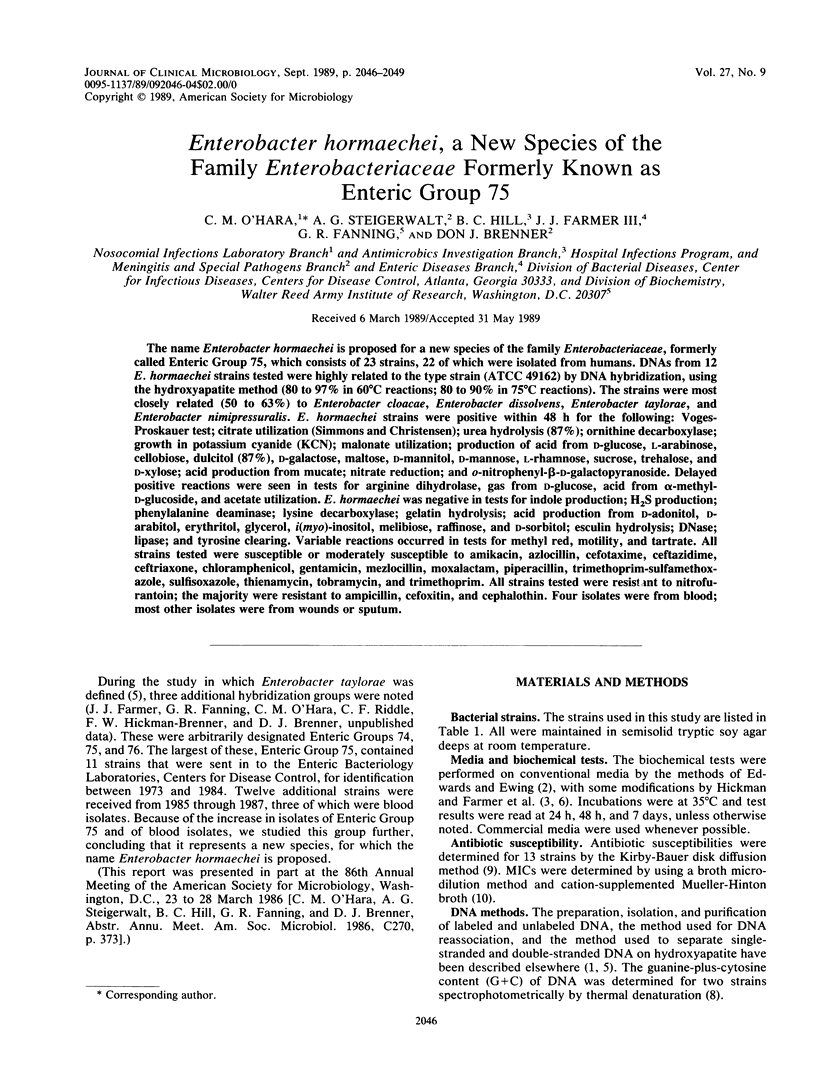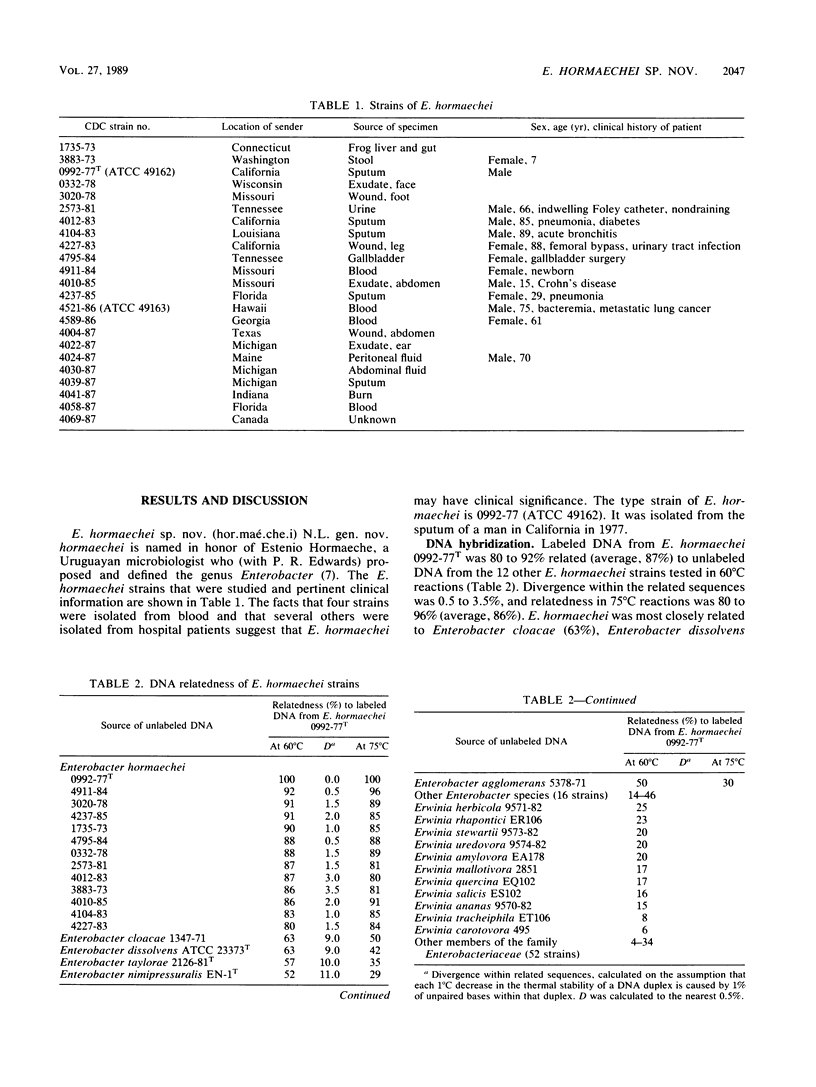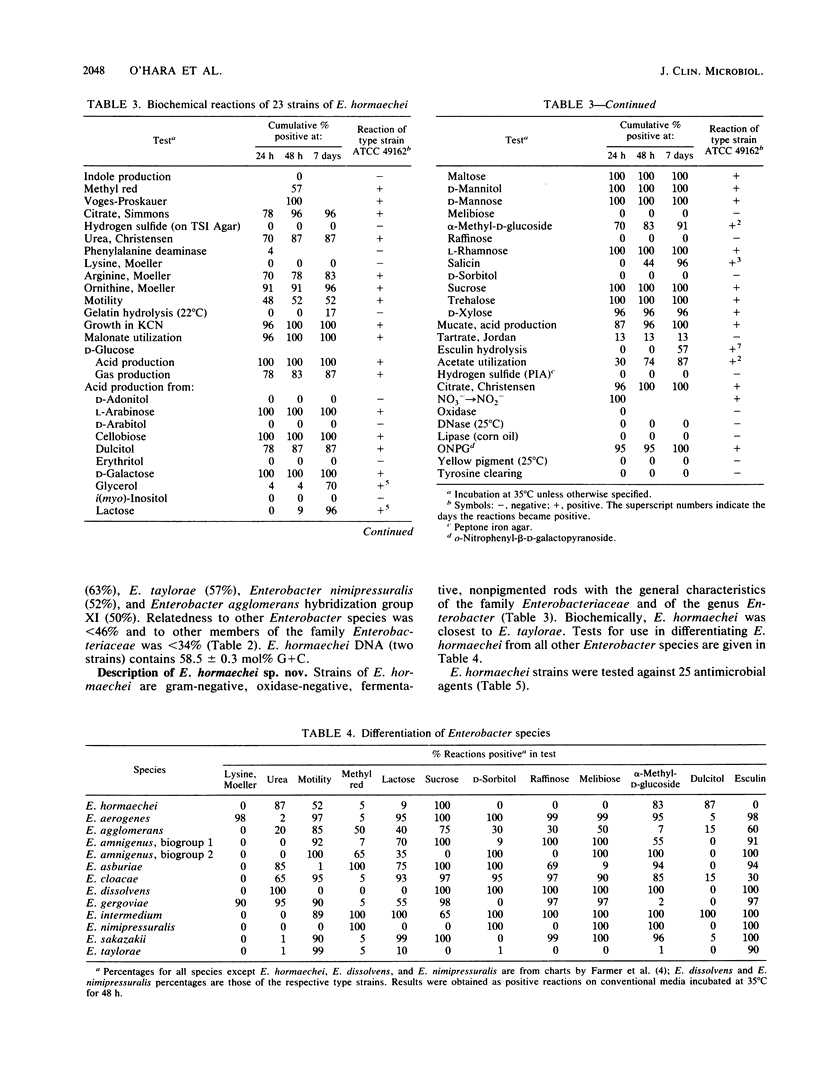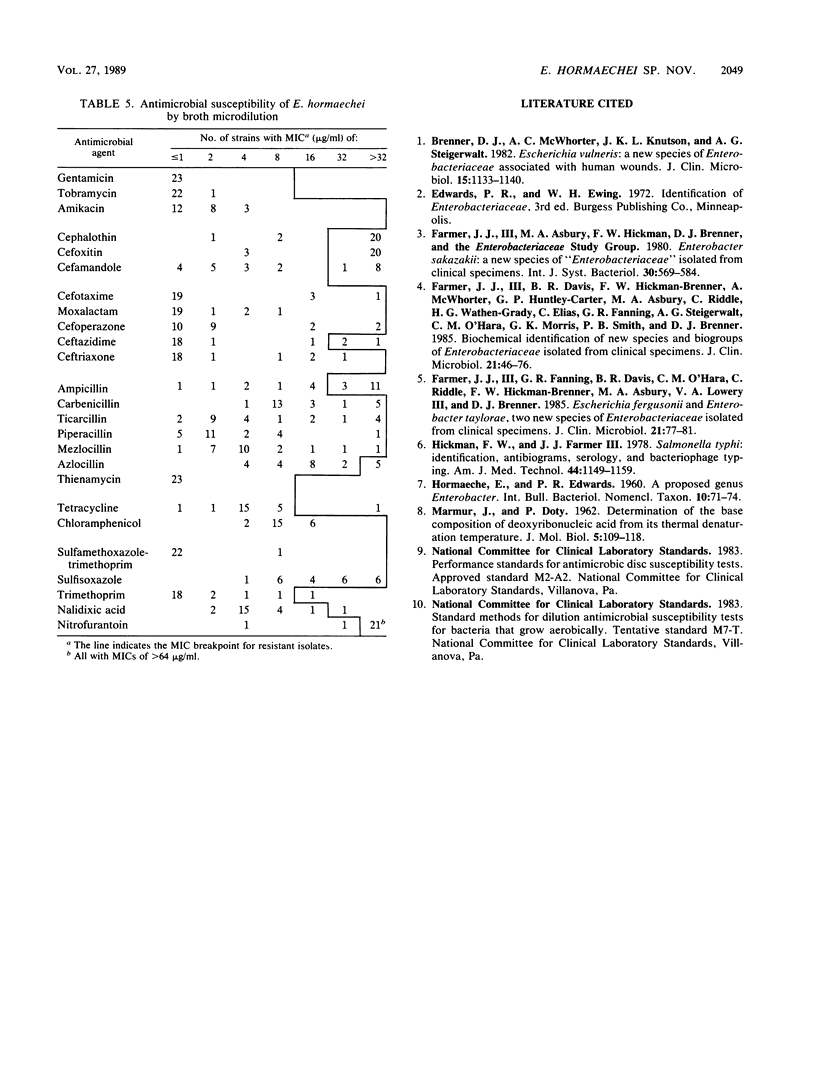Abstract
The name Enterobacter hormaechei is proposed for a new species of the family Enterobacteriaceae, formerly called Enteric Group 75, which consists of 23 strains, 22 of which were isolated from humans. DNAs from 12 E. hormaechei strains tested were highly related to the type strain (ATCC 49162) by DNA hybridization, using the hydroxyapatite method (80 to 97% in 60 degrees C reactions; 80 to 90% in 75 degrees C reactions). The strains were most closely related (50 to 63%) to Enterobacter cloacae, Enterobacter dissolvens, Enterobacter taylorae, and Enterobacter nimipressuralis. E. hormaechei strains were positive within 48 h for the following: Voges-Proskauer test; citrate utilization (Simmons and Christensen); urea hydrolysis (87%); ornithine decarboxylase; growth in potassium cyanide (KCN); malonate utilization; production of acid from D-glucose, L-arabinose, cellobiose, dulcitol (87%), D-galactose, maltose, D-mannitol, D-mannose, L-rhamnose, sucrose, trehalose, and D-xylose; acid production from mucate; nitrate reduction; and o-nitrophenyl-beta-D-galactopyranoside. Delayed positive reactions were seen in tests for arginine dihydrolase, gas from D-glucose, acid from alpha-methyl-D-glucoside, and acetate utilization. E. hormaechei was negative in tests for indole production; H2S production; phenylalanine deaminase; lysine decarboxylase; gelatin hydrolysis; acid production from D-adonitol, D-arabitol, erythritol, glycerol, i(myo)-inositol, melibiose, raffinose, and D-sorbitol; esculin hydrolysis; DNase; lipase; and tyrosine clearing. Variable reactions occurred in tests for methyl red, motility, and tartrate. All strains tested were susceptible or moderately susceptible to amikacin, azlocillin, cefotaxime, ceftazidime, ceftriaxone, chloramphenicol, gentamicin, mezlocillin, moxalactam, piperacillin, trimethoprim-sulfamethoxazole, sulfisoxazole, thienamycin, tobramycin, and trimethoprim. All strains tested were resistant to nitrofurantoin; the majority were resistant to ampicillin, cefoxitin, and cephalothin. Four isolates were from blood; most other isolates were from wounds or sputum.
Full text
PDF



Selected References
These references are in PubMed. This may not be the complete list of references from this article.
- Brenner D. J., McWhorter A. C., Knutson J. K., Steigerwalt A. G. Escherichia vulneris: a new species of Enterobacteriaceae associated with human wounds. J Clin Microbiol. 1982 Jun;15(6):1133–1140. doi: 10.1128/jcm.15.6.1133-1140.1982. [DOI] [PMC free article] [PubMed] [Google Scholar]
- Farmer J. J., 3rd, Davis B. R., Hickman-Brenner F. W., McWhorter A., Huntley-Carter G. P., Asbury M. A., Riddle C., Wathen-Grady H. G., Elias C., Fanning G. R. Biochemical identification of new species and biogroups of Enterobacteriaceae isolated from clinical specimens. J Clin Microbiol. 1985 Jan;21(1):46–76. doi: 10.1128/jcm.21.1.46-76.1985. [DOI] [PMC free article] [PubMed] [Google Scholar]
- Farmer J. J., 3rd, Fanning G. R., Davis B. R., O'Hara C. M., Riddle C., Hickman-Brenner F. W., Asbury M. A., Lowery V. A., 3rd, Brenner D. J. Escherichia fergusonii and Enterobacter taylorae, two new species of Enterobacteriaceae isolated from clinical specimens. J Clin Microbiol. 1985 Jan;21(1):77–81. doi: 10.1128/jcm.21.1.77-81.1985. [DOI] [PMC free article] [PubMed] [Google Scholar]
- Hickman F. W., Farmer J. J., 3rd Salmonella typhi: identification, antibiograms, serology, and bacteriophage typing. Am J Med Technol. 1978 Dec;44(12):1149–1159. [PubMed] [Google Scholar]
- MARMUR J., DOTY P. Determination of the base composition of deoxyribonucleic acid from its thermal denaturation temperature. J Mol Biol. 1962 Jul;5:109–118. doi: 10.1016/s0022-2836(62)80066-7. [DOI] [PubMed] [Google Scholar]


